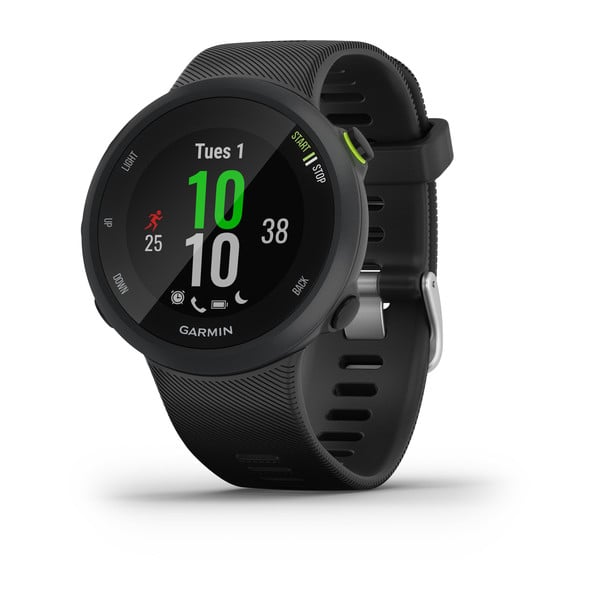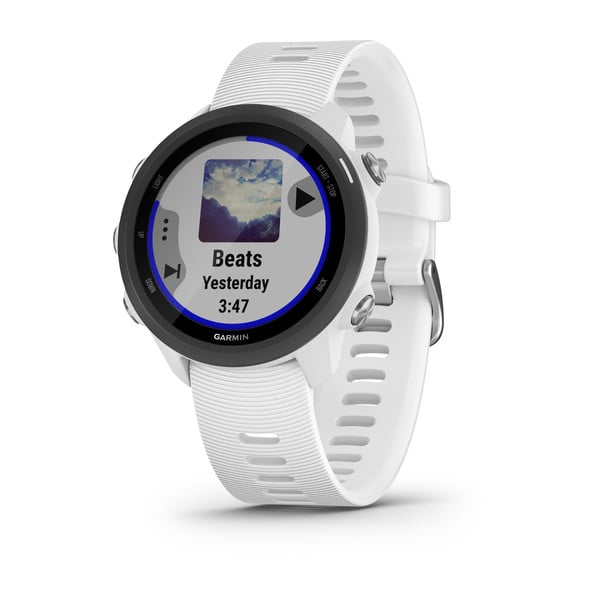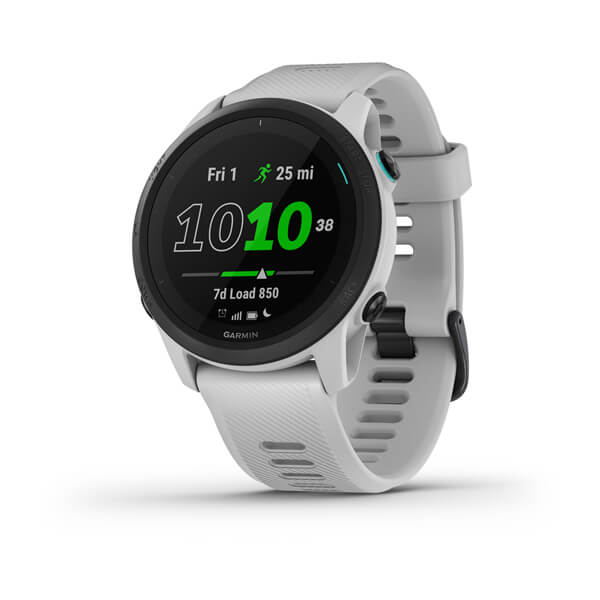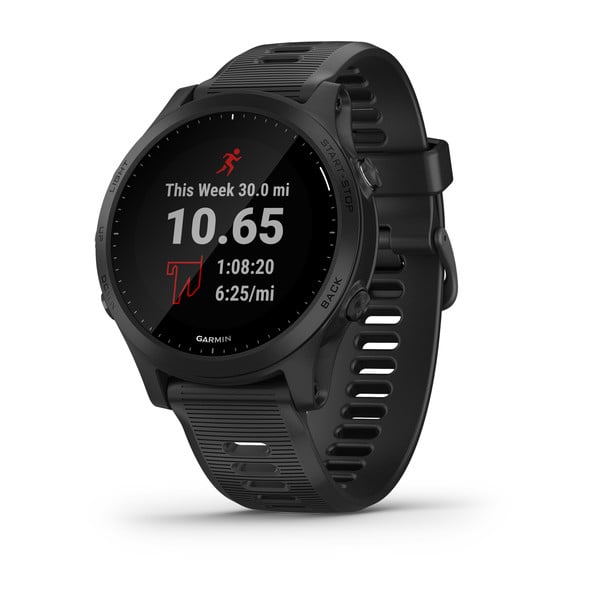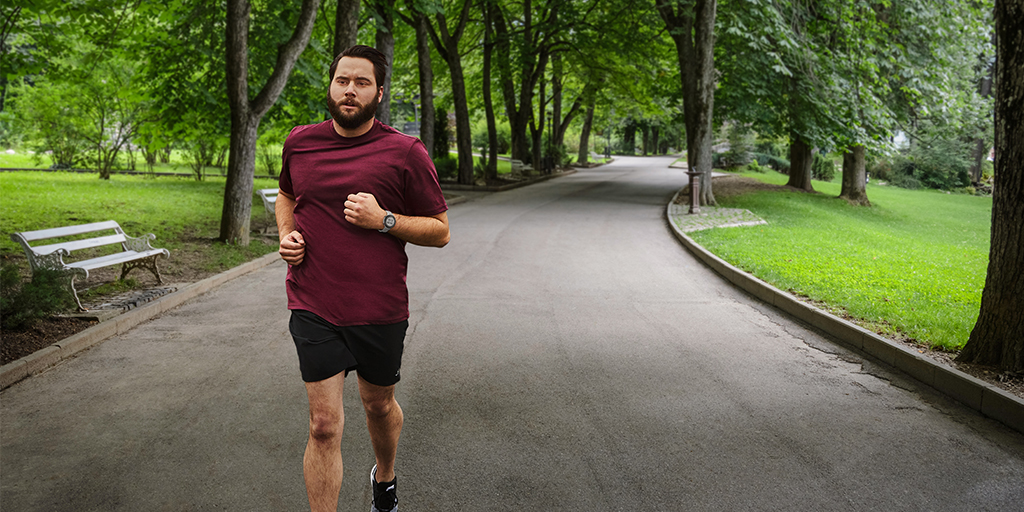
Which Garmin Running Watch Is Right for You?
Insights from a Garmin Product Manager.
You’re ready to start training for your first 5K – or maybe your next marathon is just around the corner. You’ve purchased your new running shoes and refreshed your workout attire…but what about your running watch? How do you decide which Garmin watch should be your new running companion?
That’s where Joe Heikes, Garmin’s lead product manager for the consumer segment, can help. Joe has worked at Garmin for 12 years and has run 25 (24 in-person and 1 virtual) marathons so far – Boston being his all-time favorite, hands down. When he’s not out logging miles, Joe is working on the Forerunner line of running watches. Joe joined Harrison Crum of the Marathon Training for Beginners podcast to discuss options when shopping for a Garmin running watch. Portions of their discussion are below and have been edited for clarity.
Harrison: There are a lot of runners out there who are looking for advice – maybe they signed up for a half-marathon, or maybe they signed up for a marathon, kind of on their bucket list, and now they’re thinking ‘now what, what are the first steps?’ Why is Garmin sort of the gold standard when it comes to marathon training?
Joe: I think it’s appropriate to bring up the fact that we’ve been the runner’s watch since way before it was cool. We have a lot of experience in there and we haven’t stood still either. We continue to innovate – generation after generation after generation – and not just the runner’s watch experience, but also the rest of the runner’s day. I think some people have misconceptions that if you have a Garmin watch, you’re going to give up all these additional convenience features that have come along in the last few years, but that’s not the case. As far as the running features go, though, the Garmin Forerunner product line is built for the athlete first. It is a built-for-purpose product.
Harrison: I was hoping you could take us through the lineup – sort of the most entry-level to the highest level … if I’m kind of just looking into getting into running, and I have no idea what the [Forerunner®] 645 and the 245 do. Can you walk us through that lineup?
Joe: Our entry-level Forerunner product in the current product generation is the Forerunner® 45. First of all, I’m very proud of this watch and I think there are very advanced runners that will purchase this watch. As far as what your core needs are as a runner, this watch will do almost everything you want anyway because you get GPS, time distance and pace. Those are like the critical bread and butter; you’ve got to have that stuff. It connects to your phone so you get smartphone notifications with it and along with that, it will automatically upload your running data to the Garmin Connect™ app so you can see all your stats. You can see where you ran, how far, how fast, how fast was this mile, how fast was that mile. We also have a program in Garmin that I’m pretty proud of called Garmin Coach, which is our automatic, adaptive training program that does 5Ks, 10Ks and half marathons. We work with well-known coaches like Greg McMillan, Jeff Galloway and Amy-Parkerson Mitchell. They created sort of the brains behind how these training plans work. The plans adapt your training based on how you’re doing, give you the next workout for the next day and the next week and so forth but will change according to your needs and how you’re doing in the program, according to the input that these coaches gave us on how these plans should work.
Harrison: I’m assuming there’s a next level because that’s sort of the entry level, so what’s the next one from there?
Joe: The next one up here is the Forerunner® 245. You pretty much get everything you were getting anyway with the Forerunner 45, but you get some additional functionality. For one thing, you get some upgraded hardware. It has a better, crisper display with more color. The 245 has a lot more activities that users can do besides running, so it has more support for other activities. We have a version of the 245 that has built-in music [Forerunner® 245 Music] so you can download playlists from your Spotify®, Deezer or Amazon Music account. We have features that we call training effect, training load and training status that are kind of about you and about your body and how it’s responding to the training that are in the 245 that are not in the Forerunner 45, so there are more rich features from the physiological point of view as well.
Harrison: So, let’s say I’m going to step it up even one level above the 245. What’s my next watch?
Joe: The next one is the Forerunner® 645 or Forerunner® 645 Music and then the Forerunner® 945. The 945 is kind of our cream-of-the-crop, flagship product in the Forerunner line. And really when you move up to that 900 series, it’s a full-on, almost-everything-we-can-make-the-watch-do-kind-of-thing. The 945 typically brings in more triathlon-focused features. Things like cycling power, things like the ability to have a multisport event on your watch where you simply just press the lap button and you switch from swim to bike to run. The 945 also adds additional physio stuff that maybe we don’t do on the Forerunner 245 and 645. Things like, we’ve added recently a simple classification of your workout where we’ll tell you at the end of your workout ‘well, what was the main benefit of what you just did?’ Was it improving VO2 max? Was it improving your base? Was it anaerobic? So there’s some additional physiological features that come along with the 945 as well.
Harrison: I think we’ve kind of talked about all the watches, or are there more that I’m not even aware of?
Joe: Well, you know, we’re always working on something new, but I do want to mention that some of the newer watches have safety and tracking features. So, for example, even with the Forerunner 45, you can set up your watch and your phone to transmit your position while you’re running using your smartphone. That’s our LiveTrack feature. Also, you can actually send a little help message to the people you’ve identified as your emergency contacts from the watch when paired with your smartphone. It will send a “Hey, Stephanie has identified you as an emergency contact and she needs help at this location.”
Harrison: That’s amazing. Is there anything else that you think would be worthwhile sharing with our listeners?
Joe: For a beginning marathon runner, there is a feature called PacePro™ that is available on some of the watches. This would be really good for a new marathon runner. You can build a pacing plan, almost like the old-school pace bands that you could print out and put on your wrist so you can see what all your mile splits are supposed to be for your pacing. Well, you can kind of do that exact same thing except on your watch with this PacePro feature. So you can set this up in advance on Garmin Connect, how you want to pace your marathon and if you want to, and it will divide it up for you according to the terrain so it will automatically for example, give you slower uphills and faster downhills and that sort of thing.
You can listen to the full podcast episode on Spotify, Apple Podcasts and more.
